9+ Welcome Email Best Practices
We all know that the first impression matters a lot.
That’s why we avoid showing up late for an important meeting, avoid eating garlic before the first date, and bother to iron our whitest shirt for a job interview.
The same diligence, in fact, should be applicable to welcome emails as well. You’ve put a lot of effort into getting your subscriber’s email address, and now your task is to meet their expectations with your very first email.
But how can you do that?
You’ll find the answer with our 9 welcome email best practices. Let’s get going!
How effective are welcome emails?
Welcome emails include a group of emails that are sent to your subscribers once they just opt into your list.
It’s your chance to create a stellar first impression.
Your only task at this stage is to get subscribers hooked on you and what you stand for. This is where you will:
- Introduce yourself
- Tell your brand story
- Emphasize the benefits of being subscribed to your email list
- Explain why you differ from your competitors
- Set expectations for your relationship moving forward
- Segment new subscribers
Welcome emails work extremely effectively, not only as a way to make subscribers feel appreciated, but they also naturally subscriber engagement.
Welcome emails have a 91.43% open rate, and average 4 times the open rate and 5 times the average click-through rate of a standard email marketing campaign.
Welcome emails with promo codes and special offers can even boost your revenue by 30% per email, compared to those without offers. When generating click-throughs and revenue, welcome emails can contribute to a 196% lift in unique clicks.
Before talking about welcome email best practices, you will want to consider when to send it to your subscribers.
As a matter of fact, with welcome emails, sooner is better:
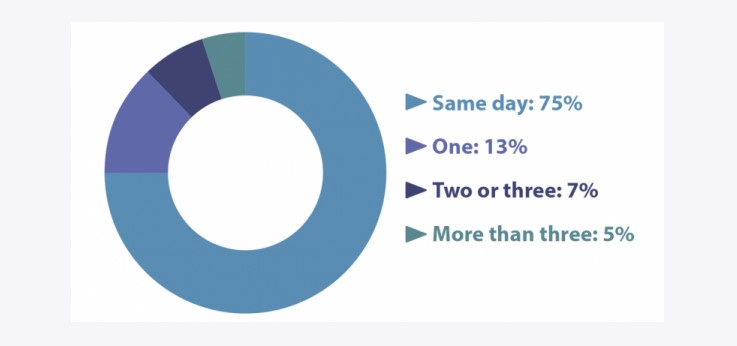
75% of marketers say that they have sent welcome emails on the same day subscribers opted-in. In terms of engagement, new leads are most engaged within the first 48 hours of subscribing, which makes early welcome emails essential to campaign success.
Don’t give subscribers a chance to forget your brand. They signed up because of their initial interest in your business, so capitalize on that interest by delivering an email right away.
9 welcome email best practices
Now for the fun part.
Let’s get into 9 best practices of a high-impact welcome email.
1. Craft a straightforward and persuasive subject line
Some marketers advise having a straightforward subject line.
No cleverness.
No guesswork.
It should immediately tell subscribers what the content of the email is.
Others recommend getting a bit more creative and using a subject line that doesn’t reveal everything.
So, our take?
It depends on your email.
In the first email where you are delivering a resource that you promised, go for a straightforward email subject line:

Or, you can even get creative like Birchbox:

Remember that you don’t always need to confine yourself to a simple subject line.
2. Personalize your emails
We often would rather someone refer to us by name, as it does evoke a more emotional response.
However, some marketers choose not to include a form field for their subscribers’ names. Because it has been proven that the more fields to fill, the less likely visitors will complete the opt-in process.
This might or might not be the case for your business.
An easy way to find out is to A/B test your email capture forms to find out. If your opt-in rate drops when you include a name field, it is a tradeoff that you will have to decide on.
From where we stand, personalized emails always win.
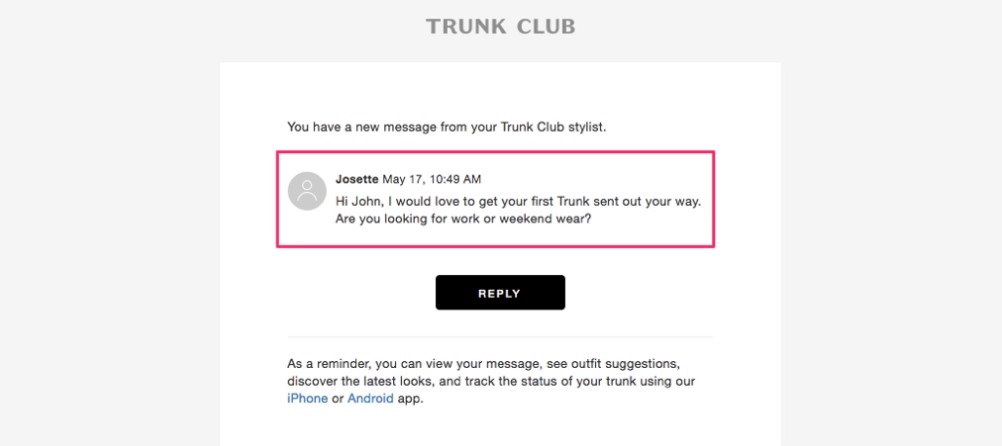
It’s vital to note that personalization isn’t only about a name.
You could tailor your emails based on the interactions that subscribers have had with your brand. Like this:
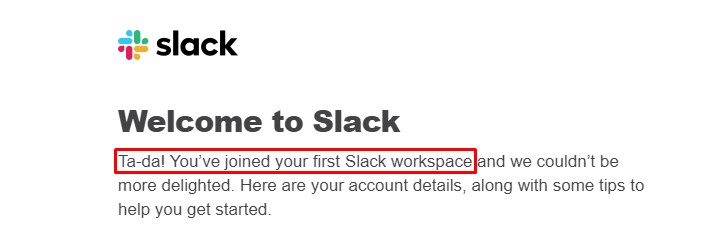
The point is, you want to show your subscribers you truly care about them.
Look at the example from Cotton Bureau:
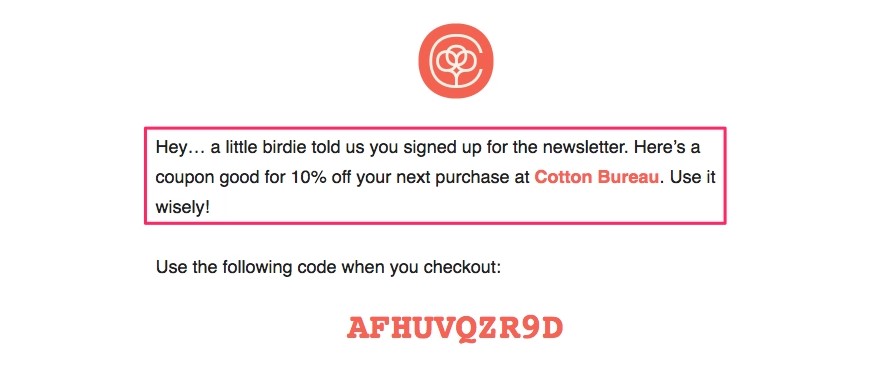
We all know that they do not throw a party for every subscriber (or any at all), but it is a point well made. They are thrilled to welcome new members.
Note that the email doesn’t even include a name for personalization, but it still has elements to evoke the same emotional response.
It goes to show that there are actually no set formulas.
3. Include a warm thank you
Show your subscribers that you are really grateful for their trust by simply saying “Thank You.”
You could take it a step further and offer an appealing gift as a thank you.
For example, Chili offers a 15% coupon to its news subscribers:

4. Tell your brand story
Have you ever heard the saying, “a story well told is a story well sold?”
It reflects the power of stories for boosting sales.
Every decision that we make, including buying decisions, stems from emotions. It’s only after we have made the decision that we call on logic to justify it.
Your brand story can get subscribers more emotionally invested in you. So, we highly recommend that you craft an authentic and engaging brand story for your welcome email.
Let’s see how Bombas does this:
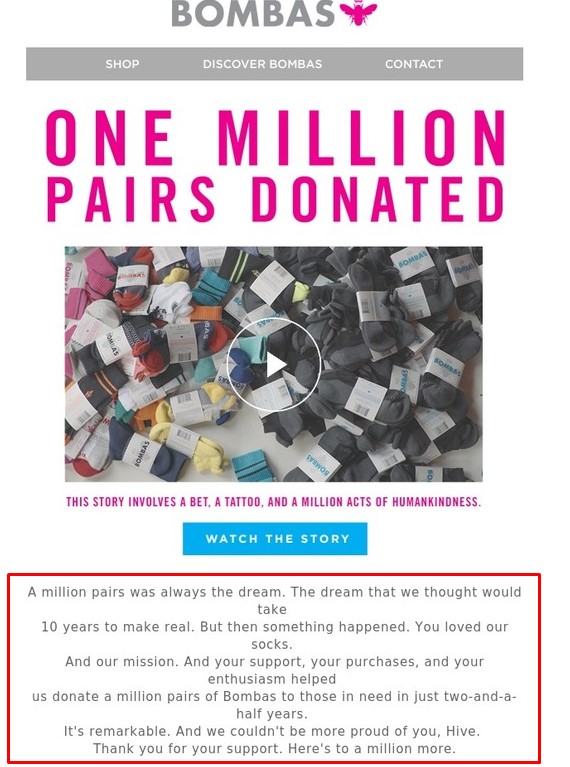
5. Address incentives and reinforce benefits
Chances are, visitors opted into your email list for a particular free resource.
Make sure you address that at the very beginning of your email. If you provide that immediate gratification, it’ll have a massive impact on how subscribers perceive your value.
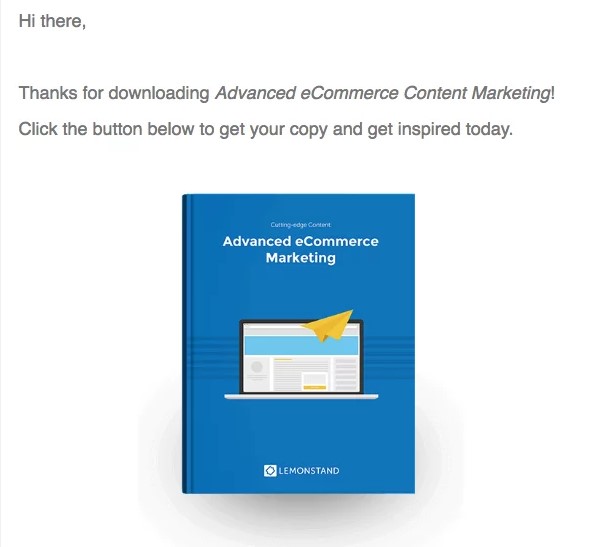
It is also a wise practice to remind your subscribers that they’ve made a smart decision by opting into your list.
So, which benefits can they expect to gain?
Below is how JCrew does:
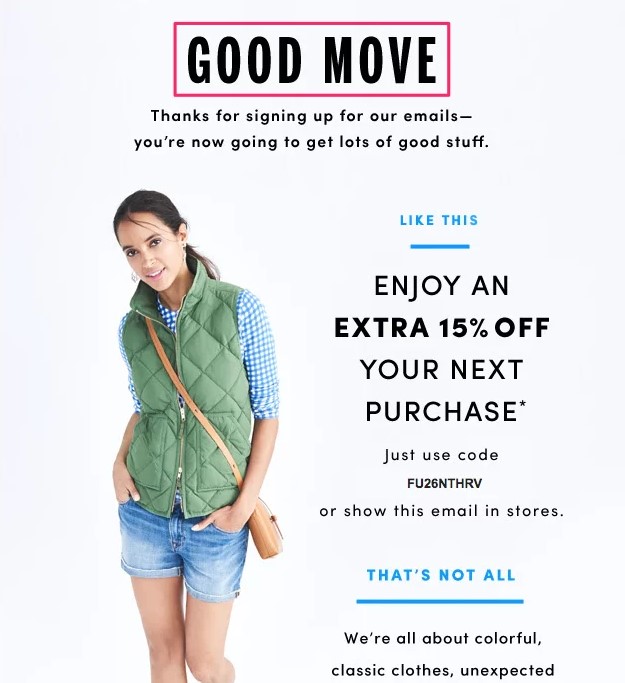
6. Set expectations
For subscribers, signing up for an email list involves a moment of trust - along with a little hesitation about what’s ahead.
In your welcome emails (and ideally on your website, too), you should set expectations for what being on your list means for subscribers. Tell them:
- How often will you email them?
- What content will subscribers receive from you?
- What gifts can they expect and when?
For example, JCrew lets subscribers know that they can expect a discount on their birthday.
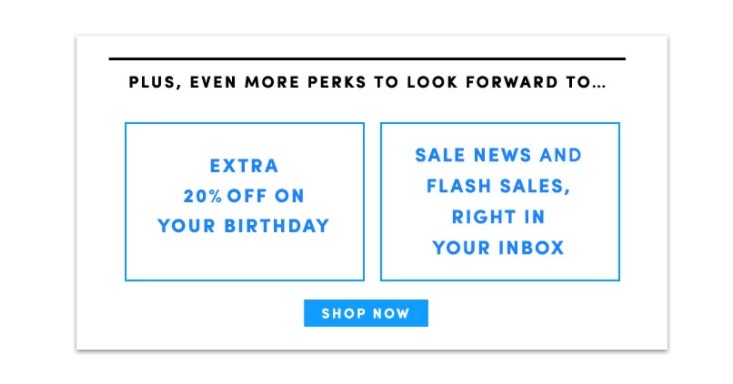
It is imperative that you set these expectations for your subscribers. By reading these expectations, your subscribers may start anticipating seeing your emails in their inbox.
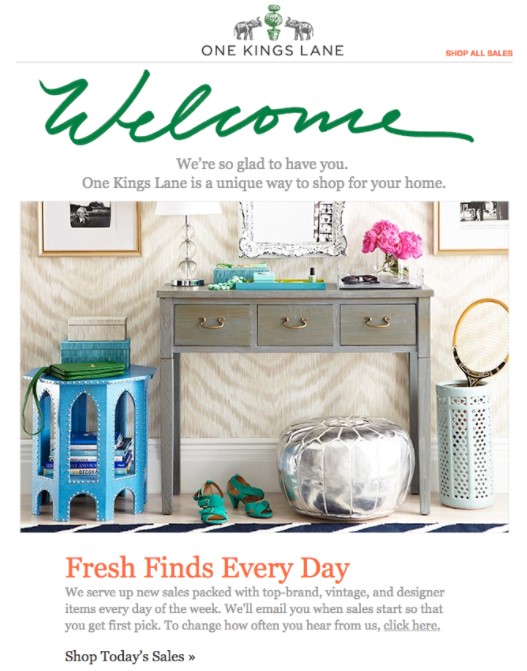
The welcome email from One Kings Lane tells new subscribers that it serves up new sales every day of the week, and they will be notified via emails at the start of every sale. For some people, getting such emails every day sounds terrifying. Rather than scare away subscribers later, the brand sets expectations upfront and gives them the option to change their email preferences.
7. Motivate new subscribers to make micro commitments
This practice sets the tone for the relationship moving forward.
Unless you get your subscribers to make a micro commitment in your welcome emails, you will have more resistance in the future.
What do we mean by a micro commitment?
Simply put, you want to get your subscribers in the habit of saying “Yes” to you. It could be anything from following you on social media, reading more of your content, or whitelisting your emails.
In this welcome email, CoSchedule motivates its subscribers to make a micro commitment by viewing its demo:
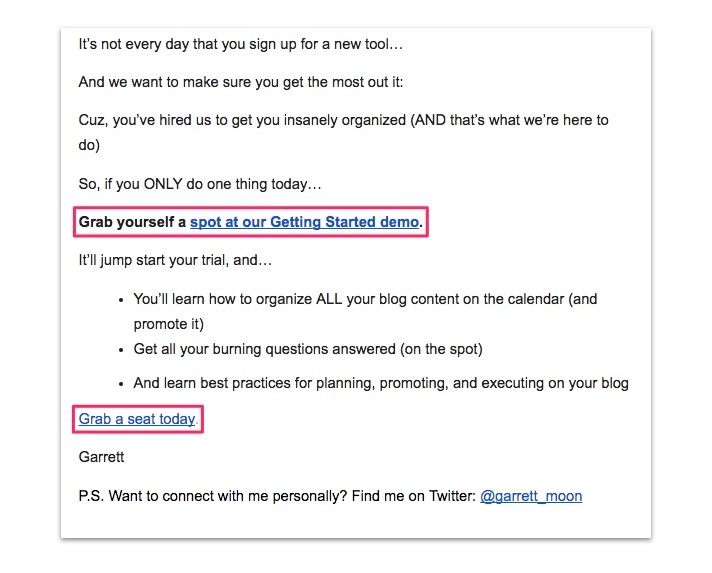
How can you achieve that?
It all rests in your CTAs (calls to action), which bring us to the next point.
8. Include primary and secondary CTAs
You already understand the power of a solid CTA.
The question is, what is the most effective strategy for your welcome emails?
The answer is, all emails should include, at least, a primary CTA. It can - and almost always is - followed by a secondary CTA.
Think about it: What is the one thing that you really want your subscribers to do immediately upon reading your email?
That is your primary CTA, and anything else is secondary.
Take the previous CoSchedule email as an example:
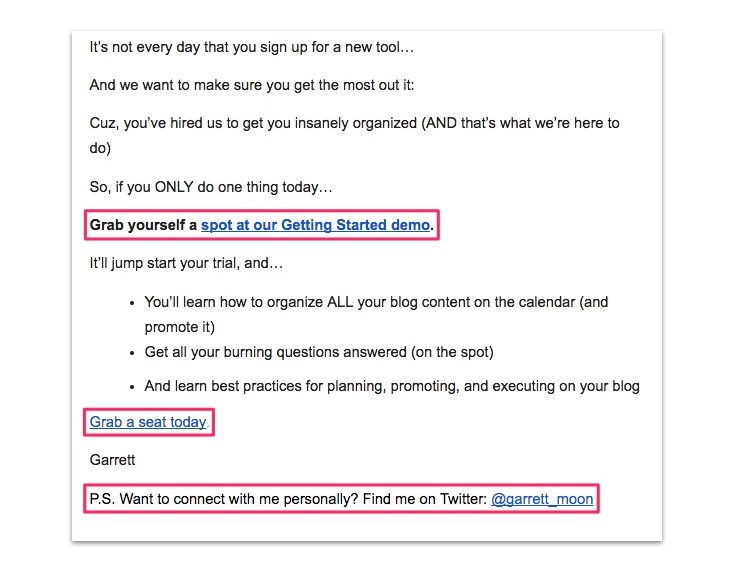
Notice how the primary CTA is emphasized several times. It is the only focus in the body of the email. There is even a line to impress upon recipients that if they only do one thing, it should be to grab a seat today to watch the demo.
The secondary CTA is left in the P.S. section of the email.
That is the most effective structure for your CTAs.
9. Consider using welcome email templates
If you find the above practices a bit hard for you, then you can look for many ready-to-use welcome email templates from AVADA Email Marketing.
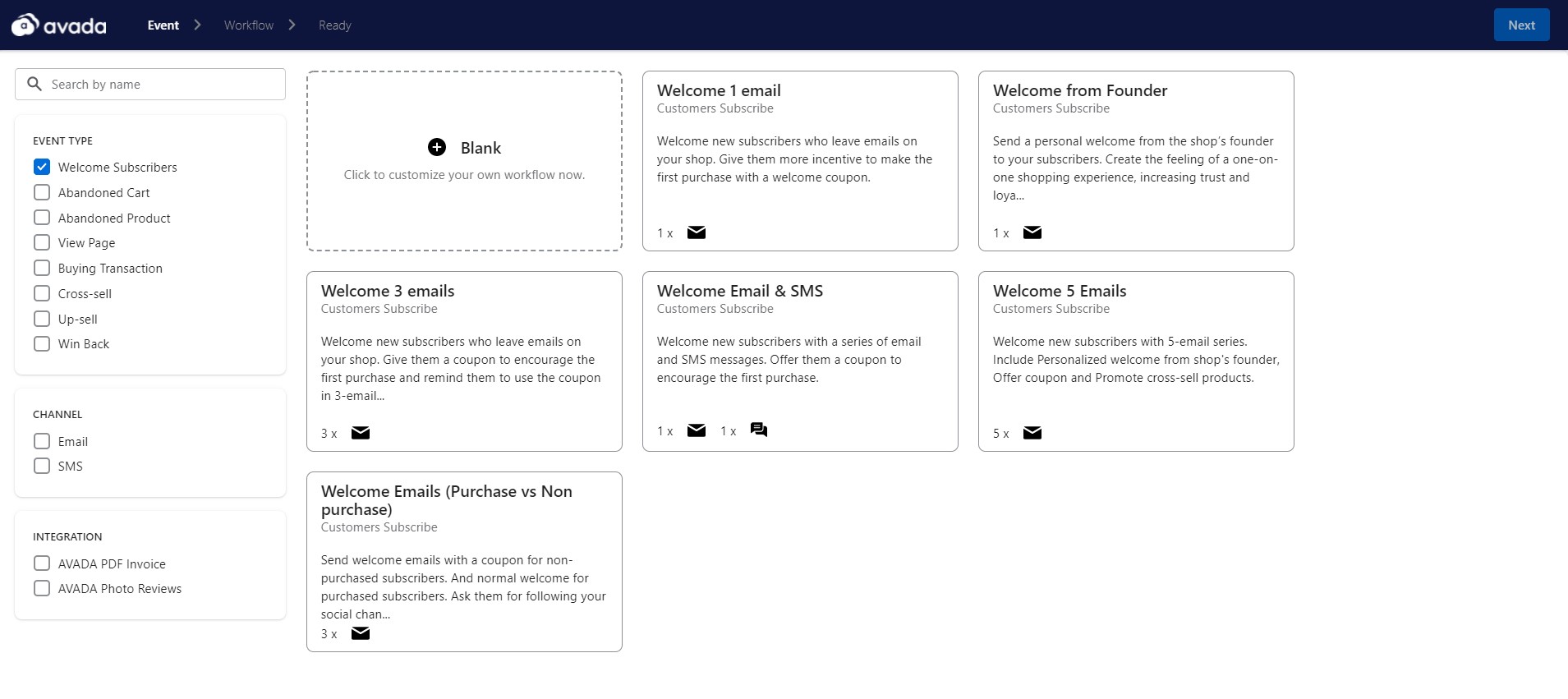
You can edit, customize, and set timing your own welcome email template. The platform offers:
- Welcome letter
- Personal welcome email from the founder
- Welcome email with a gift code
- Blank template for customization
- And many more.
Once you’ve signed up for the AVADA app, you can see all the templates available for free right from the dashboard. You’re able to segment recipients as new subscribers and new customers as well.
For example:
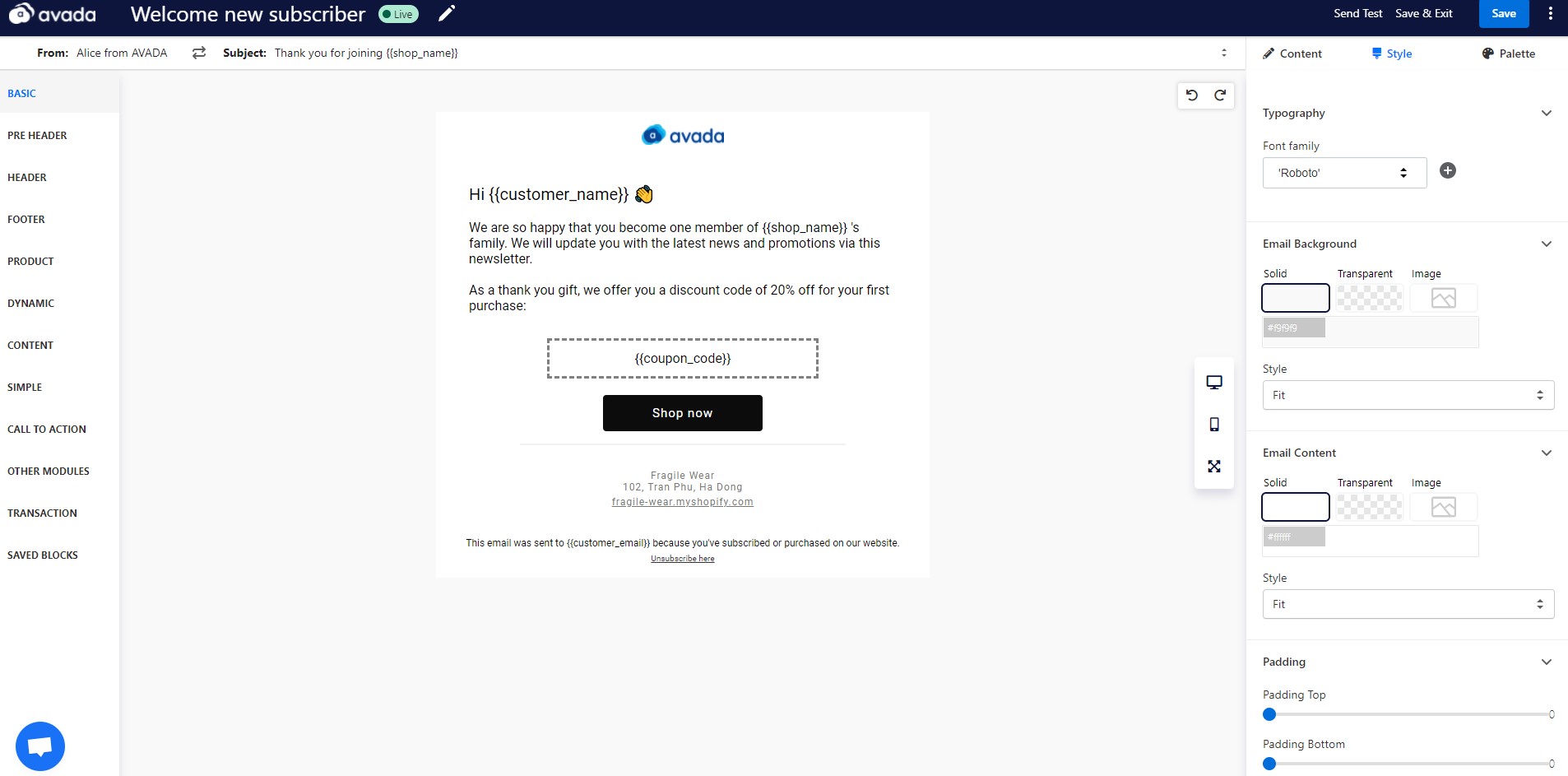
Once you click to edit the template, you’ll be taken to an editor, where you’re able to customize your email as you want. There are many other options to add blocks of elements, such as text, image, video, CTA, and more. In short, the platform allows you to change the email to fit your brand.
The bottom line
First impressions are important. You only get one chance, and then it sets the tone for the entire lifespan of the relationship.
That’s why you should craft a perfect welcome email sequence.
We hope these 9 welcome email best practices have helped you a lot. Should you have any concerns about this topic, feel free to contact us for more information. We’re always glad to hear from you!
New Posts






